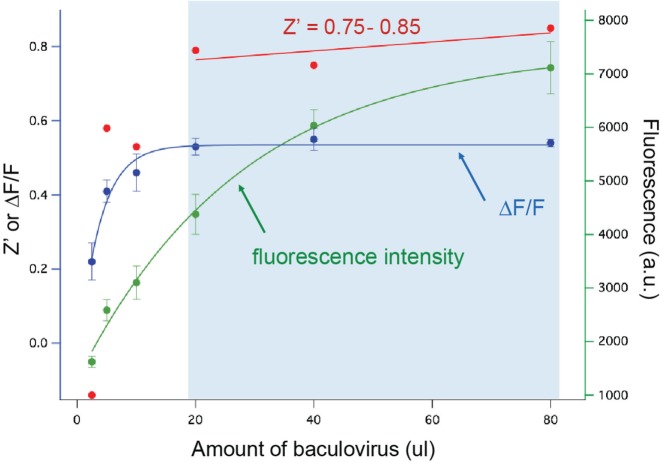Figure 5.
cAMP Difference Detector in situ (cADDis) performance in baculovirus. Increasing amounts of baculovirus led to monoexponentially increasing amounts of total fluorescence in each well. Above 20 µL per well, this increase in fluorescence had little effect on the receptor-driven ΔF, which plateaued at ~50%, which led to a remarkably large assay window of 20 to 80 µL of virus and a Z′ of 0.75 to 0.85.

